#NVHOW20 Introducing Dr Stephen Moore @smooreBofB1940 ‘The Bethnal Green Shelter Disaster’; how the causes of the greatest loss of life in a shelter in the UK during the Second World War have been distorted by post-war press claims #SWW #WWII #SecondWorldWar
1 #NVHOW20 At 2025 on 3 March 1943 173 people died on this staircase during the Bethnal Green shelter disaster. Reoccurring conspiracy theories claim of 'cover up & rumour' as information was withheld 'for two days', and details were 'kept secret for years', which persist today. 



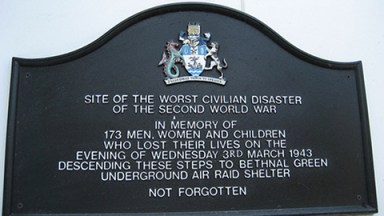
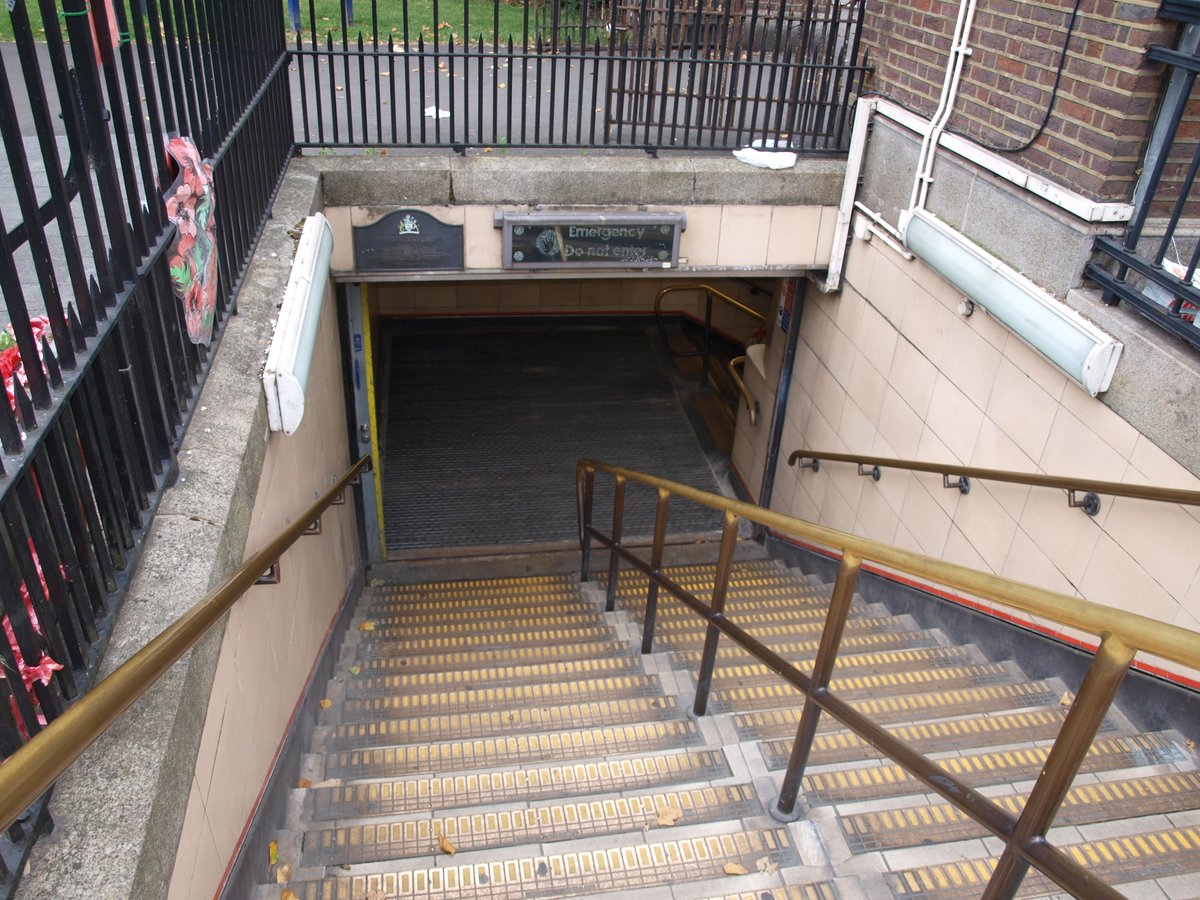
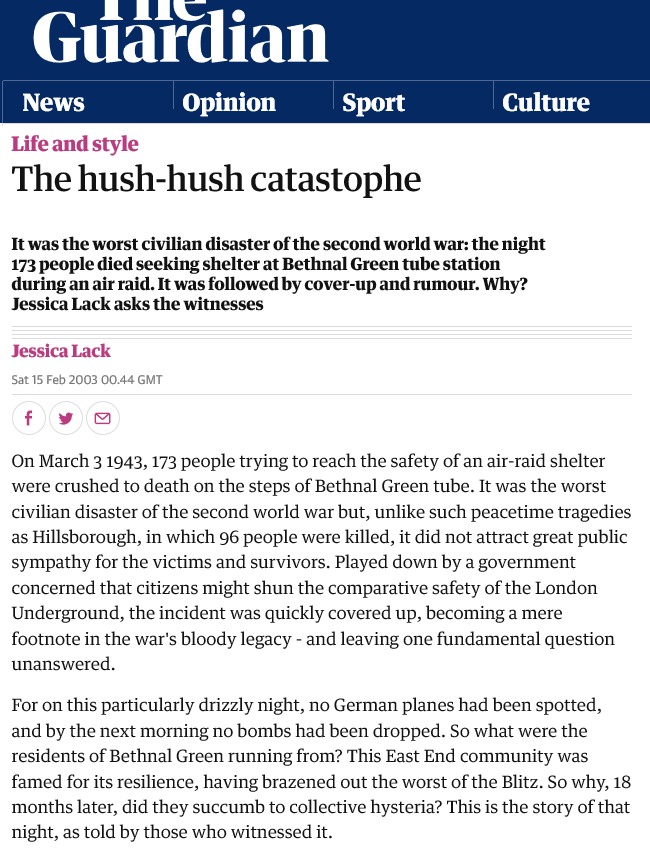
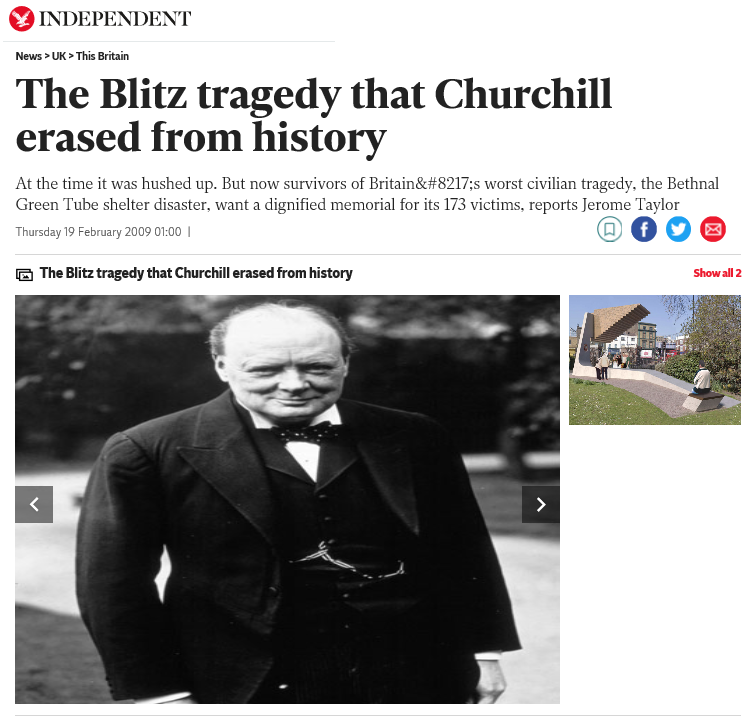
2 #NVHOW20 There was 'panic' & 'pandemonium' at the shelter, with a book portraying the Council as a hapless victim, having 'repeatedly tried, to make safe the access to the shelter’, claiming they had 'wanted to insert a crush barrier at the mouth of the shelter'. 

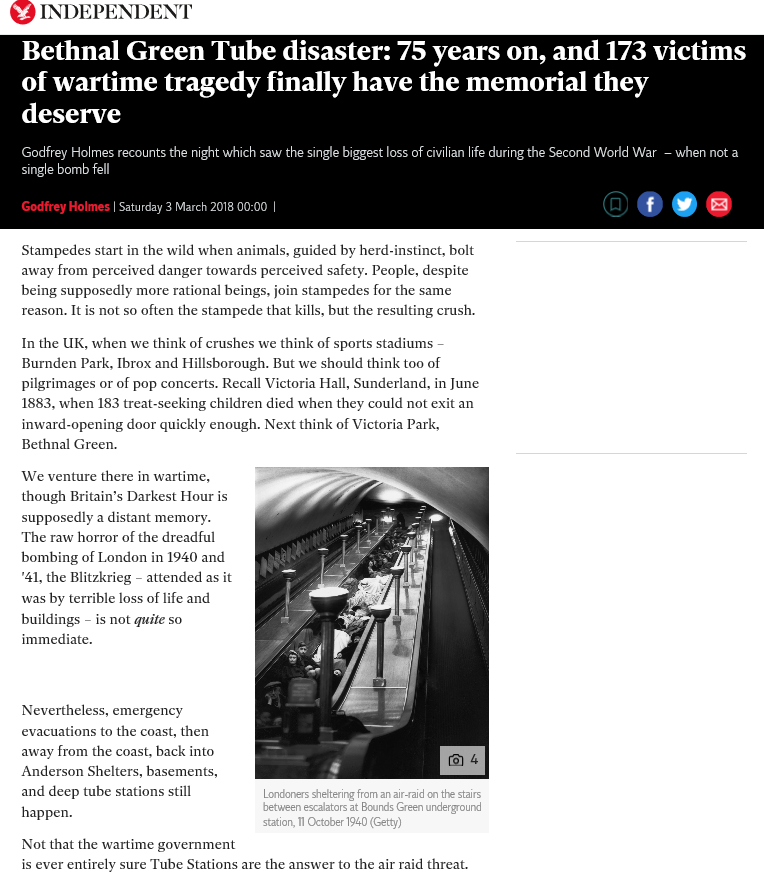
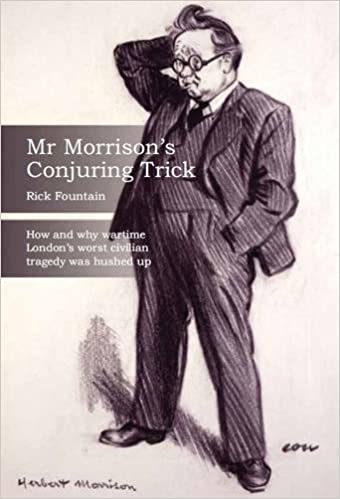
3 #NVHOW20 Press accounts appeared on 5 March, 36 hours after the incident, & since night raids were never reported directly after an attack, but on the following day, this conformed to wartime standards with most details included, & only the actual location was withheld. 



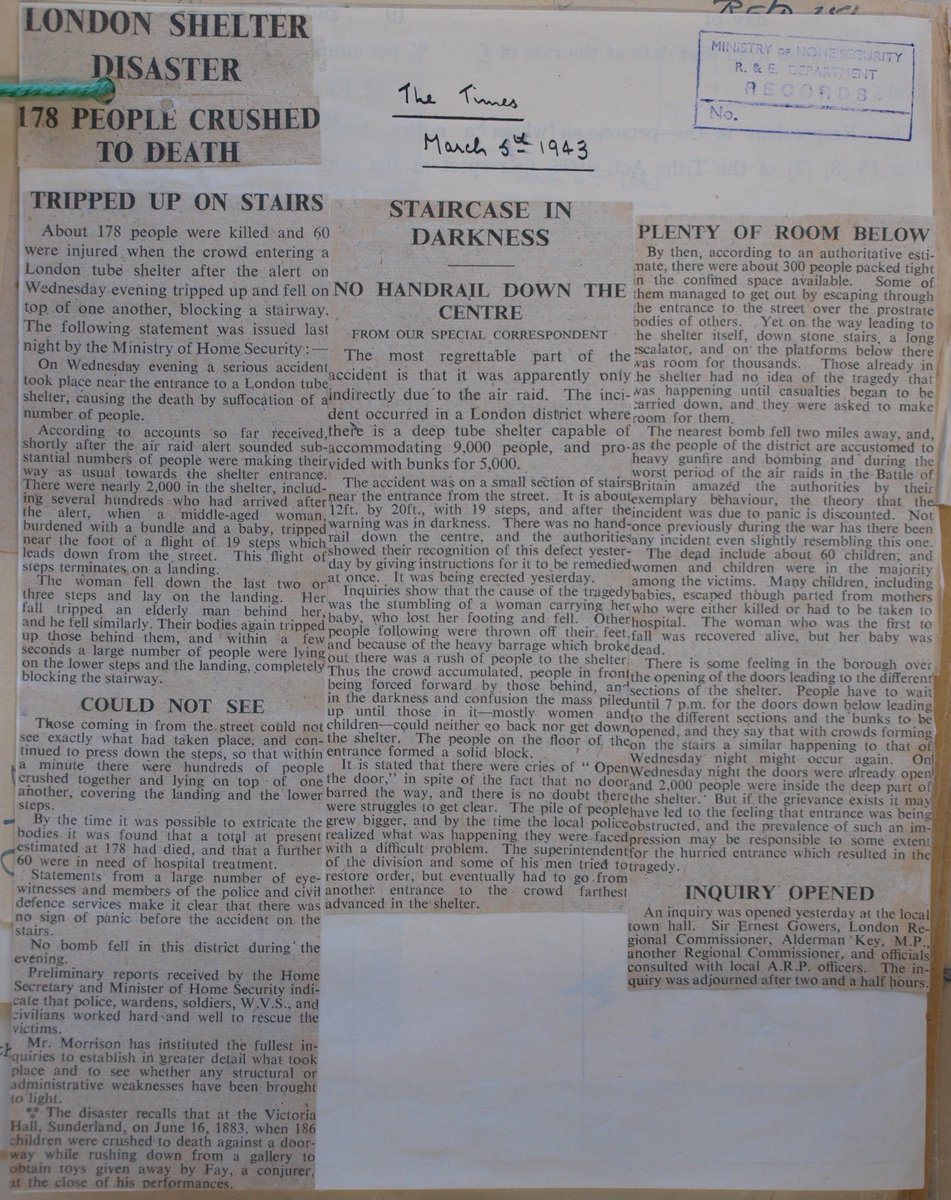
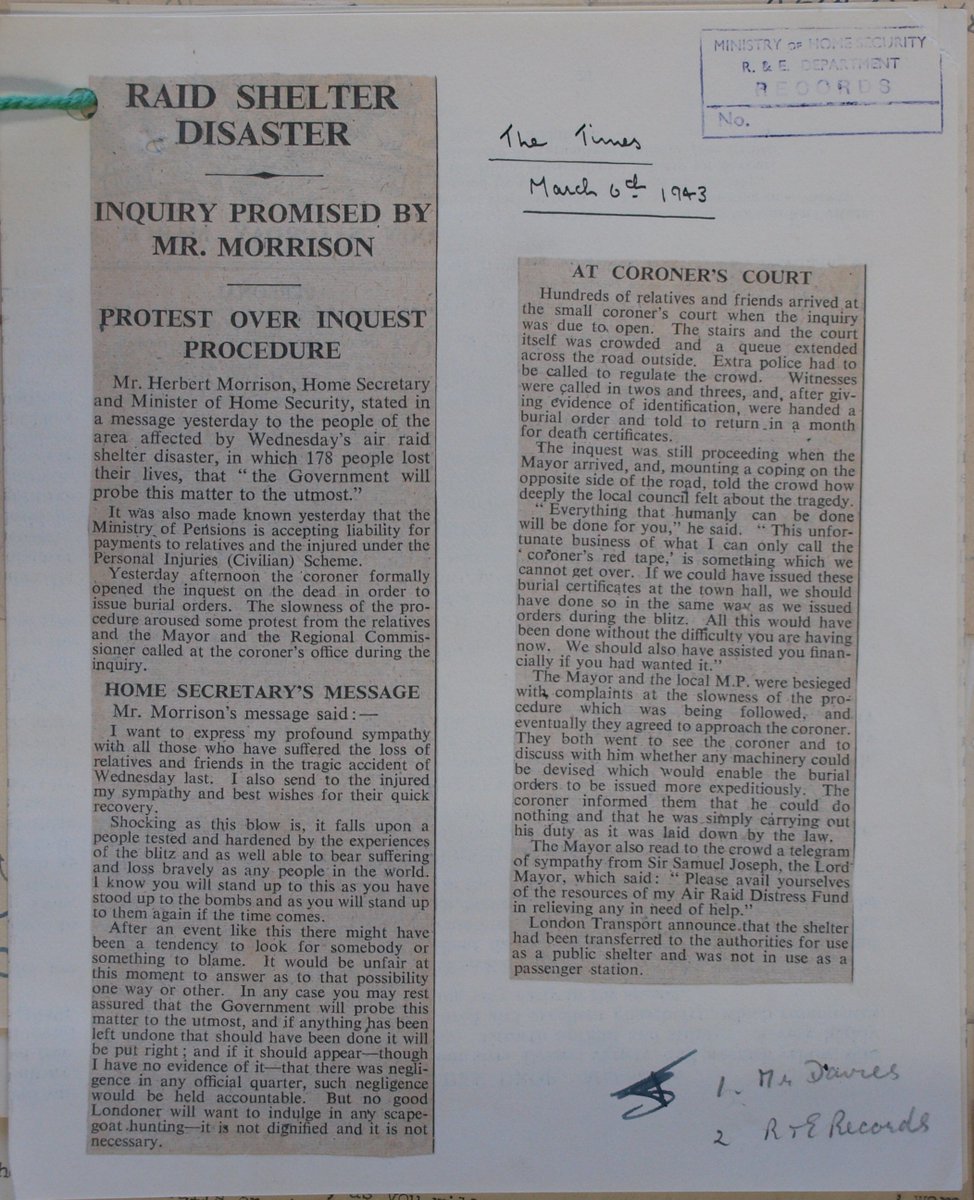

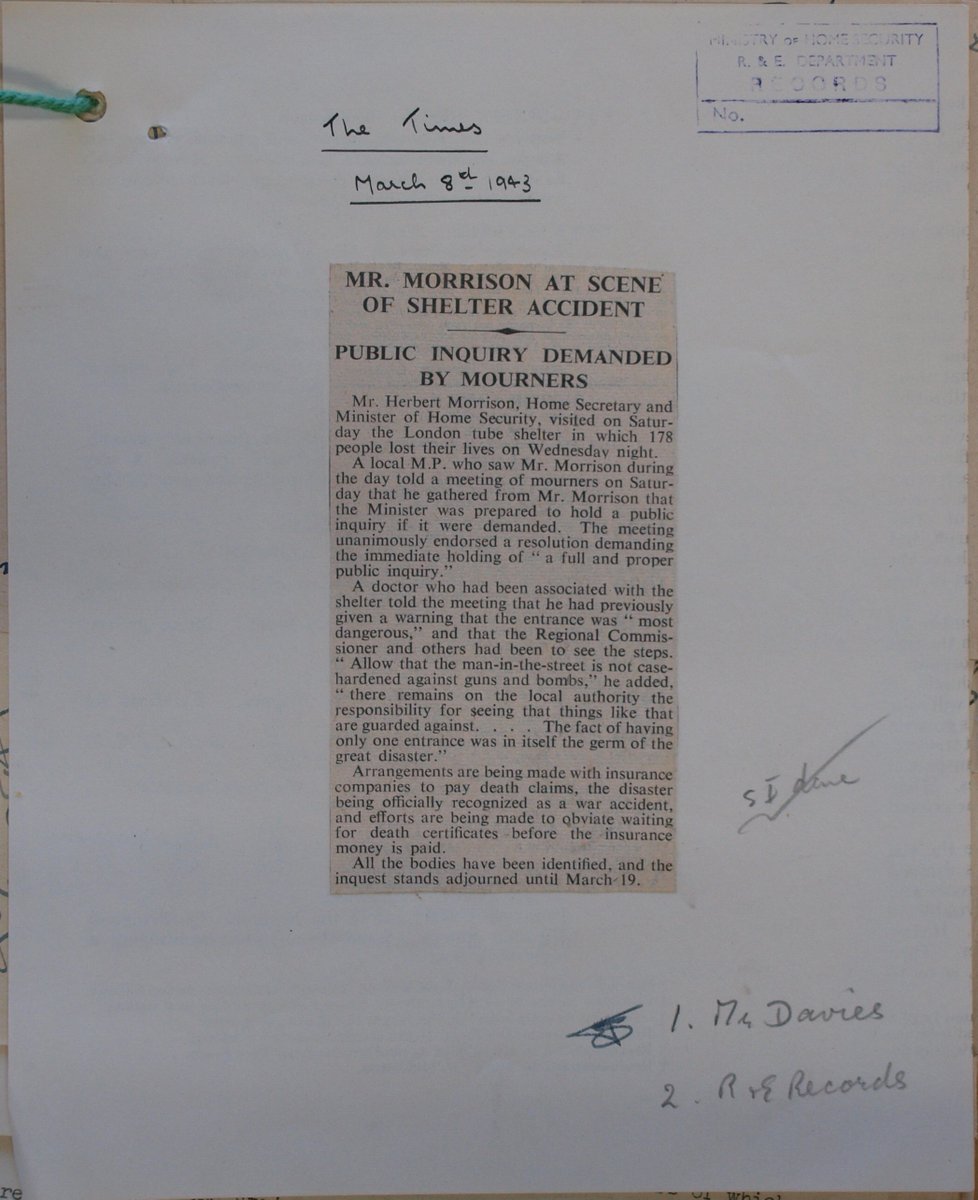
4 #NVHOW20 A Civil Defence document confirms the press reports, also mentioning 'panic' for the first time, & contained a drawing showing the location of the accident. Unlike Tube stations used as shelters, Bethnal Green was not part of the active transport network. 



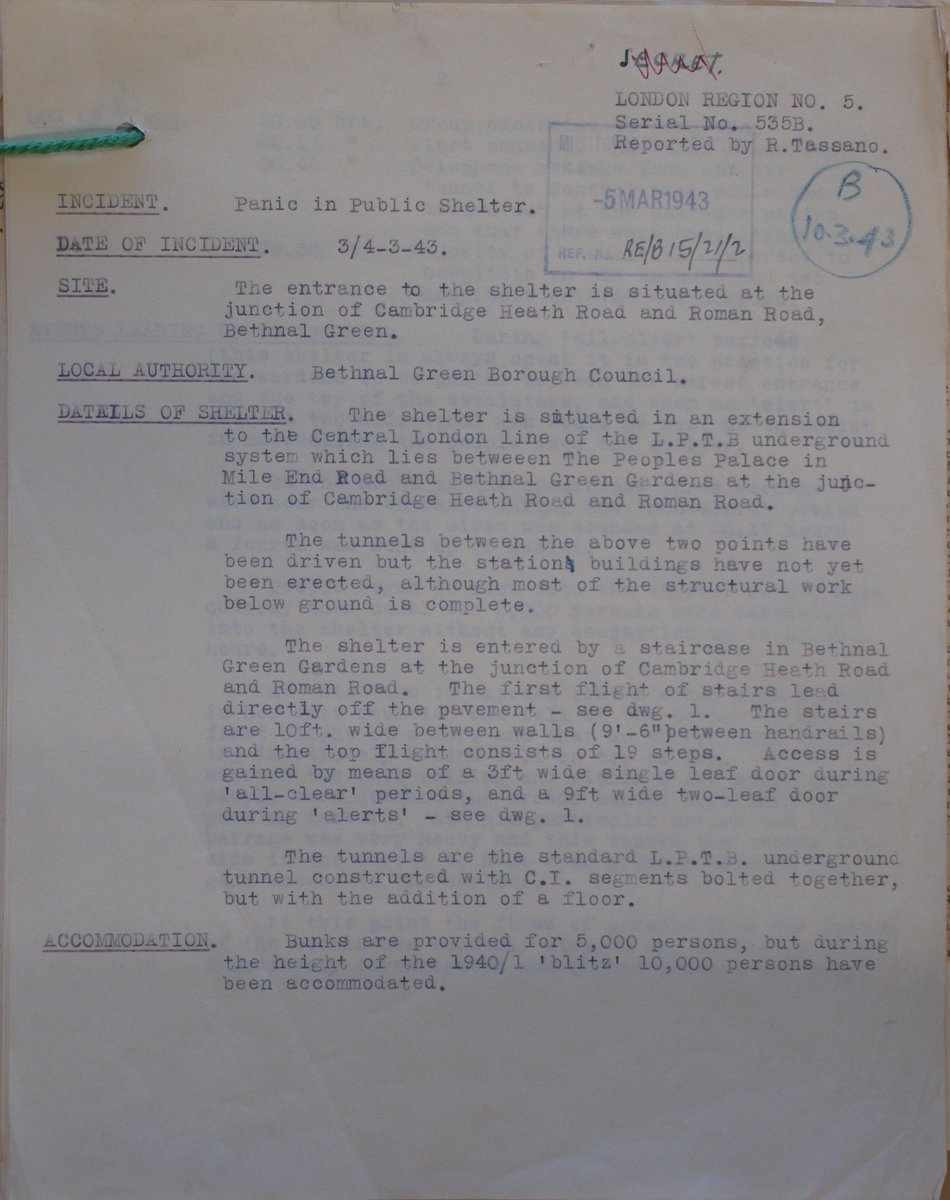
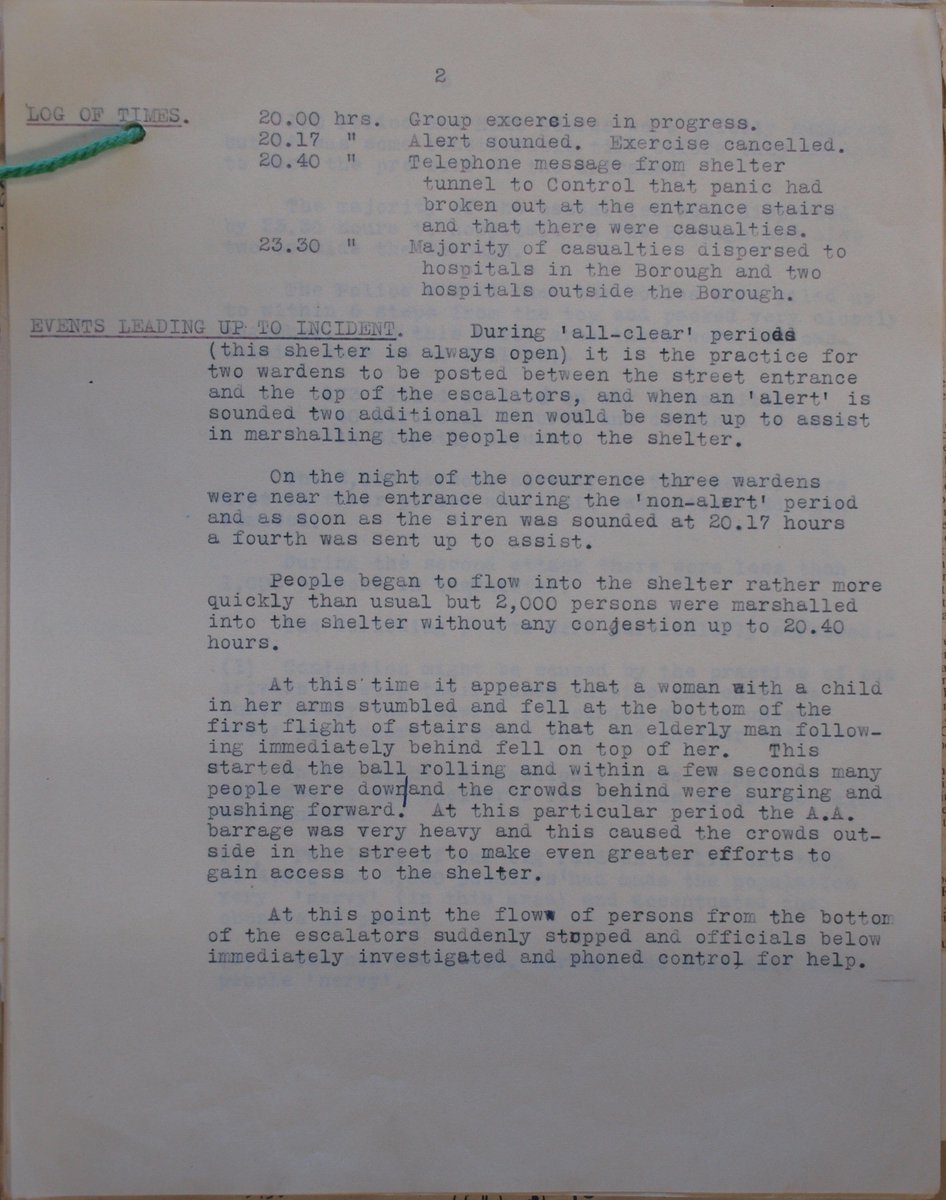
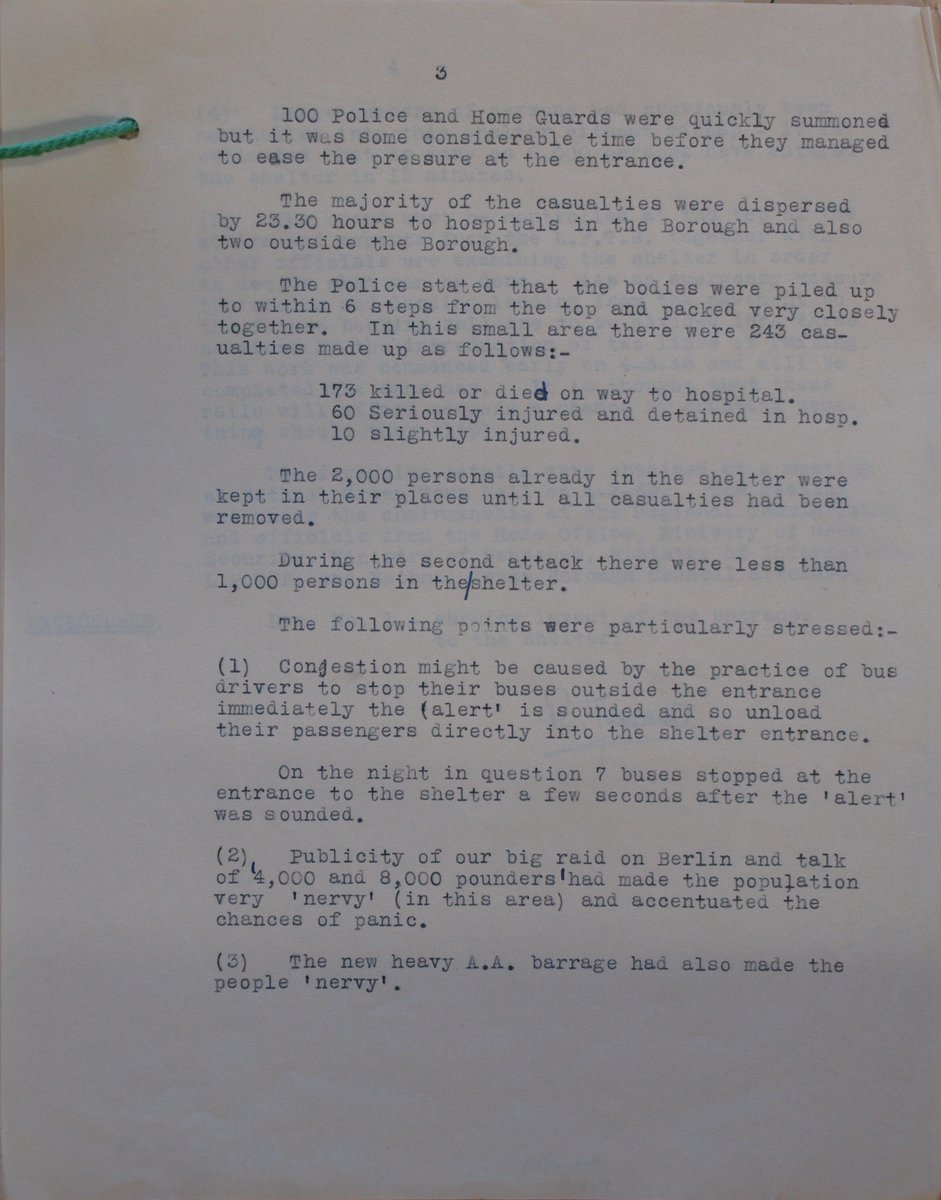
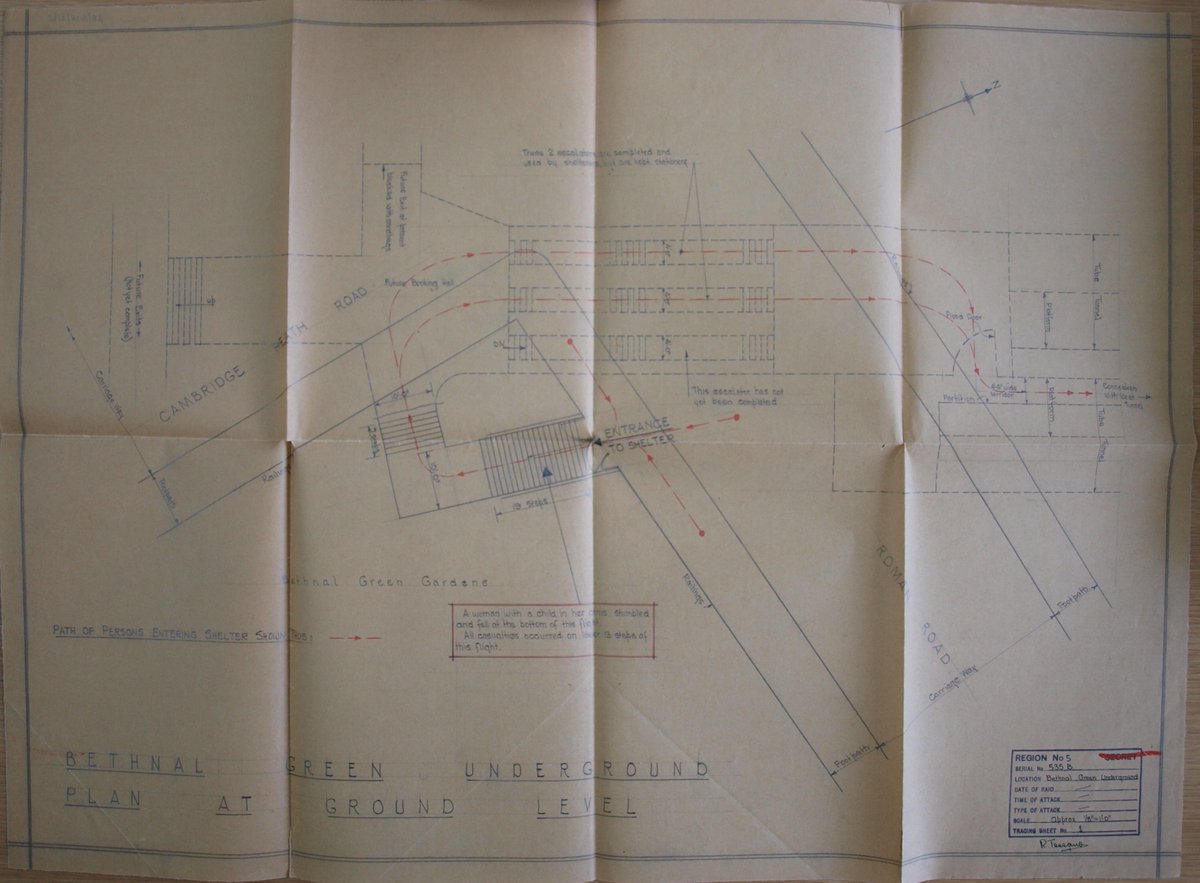
5 #NVHOW20 The Central Line extension tunnels were completed by the summer of 1939, but without rails a floor had been added to the tunnels & bunks installed. By 8 March a 'rush-breaker' had already been installed at Bethnal Green to slow people down before entering the staircase 


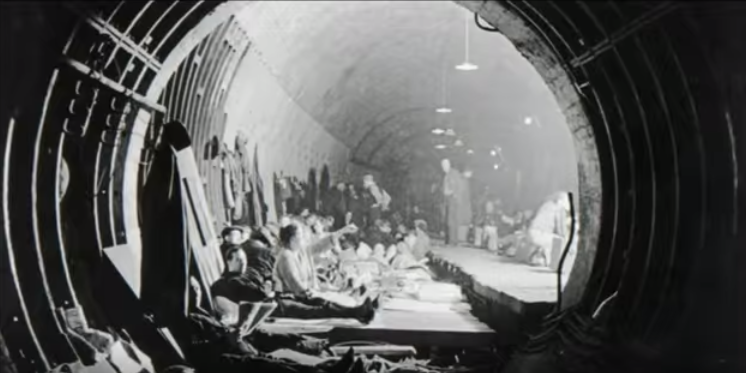
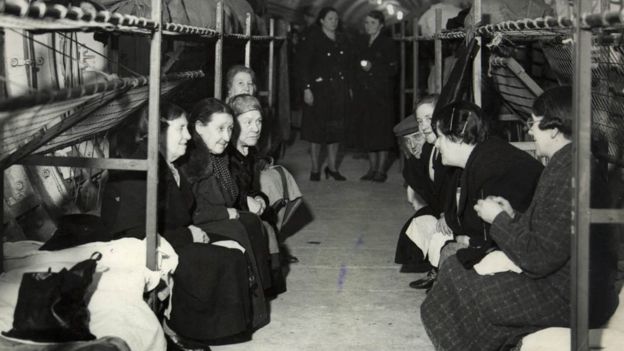
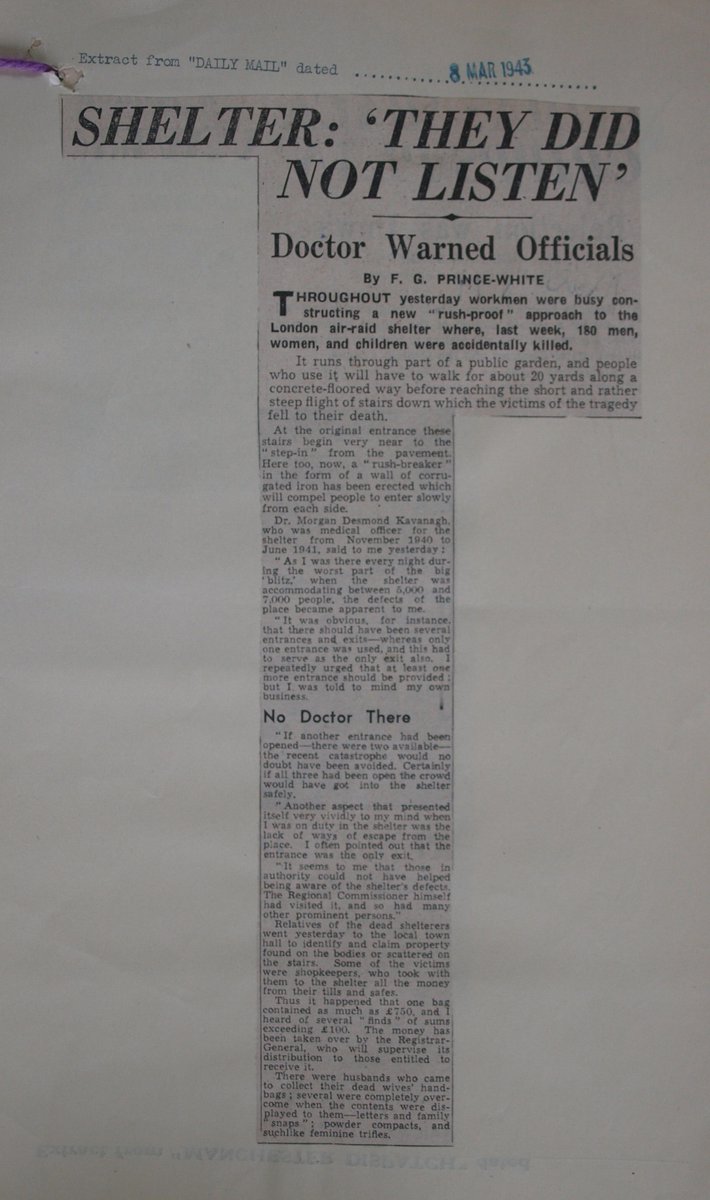
6 #NVHOW20 The Public Inquiry took place behind closed doors, with the absence of a crush barrier documented for the first time. One witness stated that people were entering the shelter 'at a level speed without any disorder', as the operation of the shelter was scrutinised. 

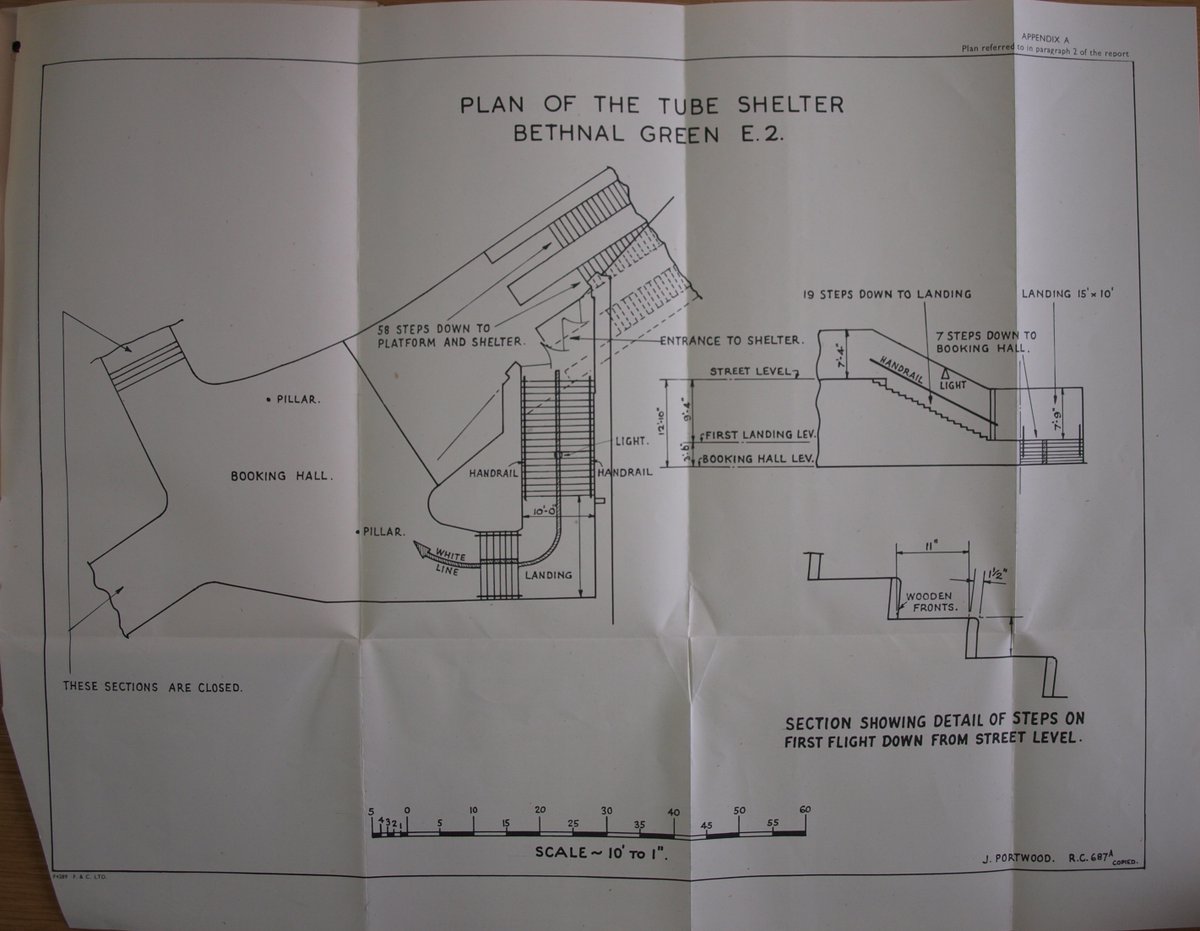
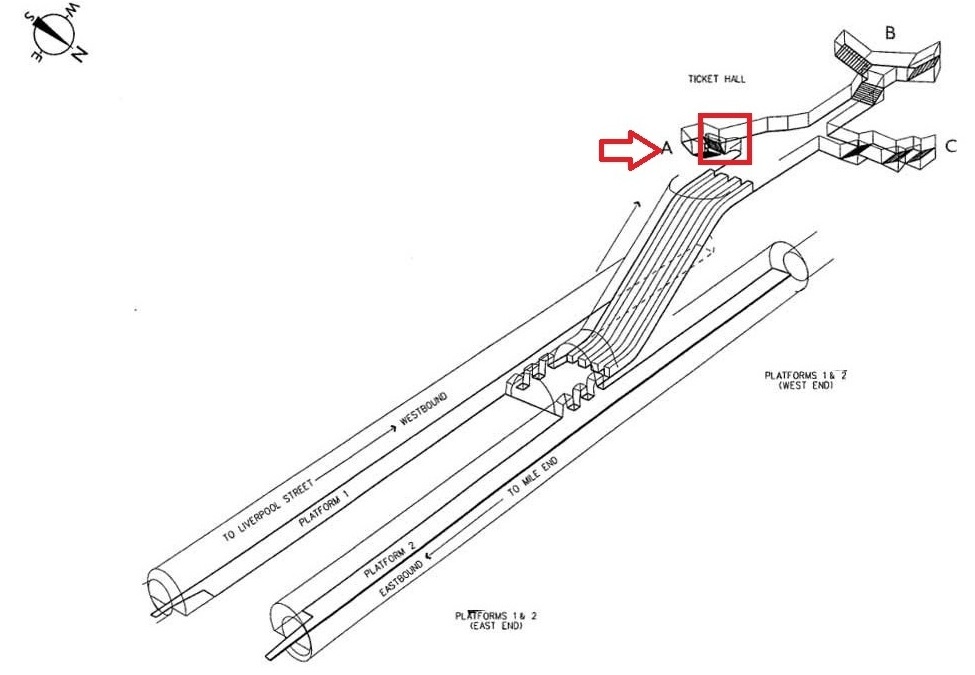
7 #NVHOW20 It was clear that crush barriers had not previously been considered at shelter entrances. The staircase was 'in the open air' throughout the Blitz, & puddles had to be swept when it rained. The Inquiry concluded that a crowd surge pushed people down the stairs. 

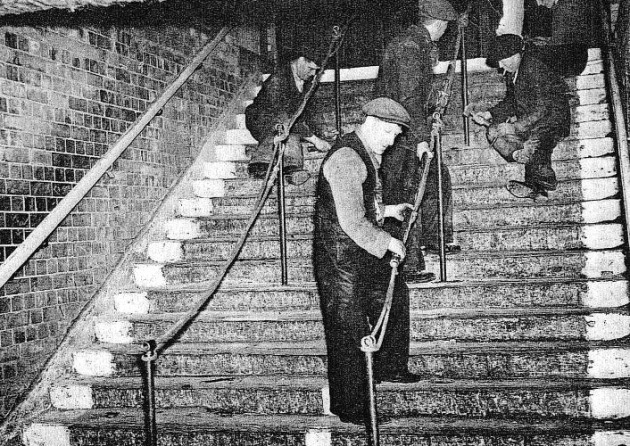
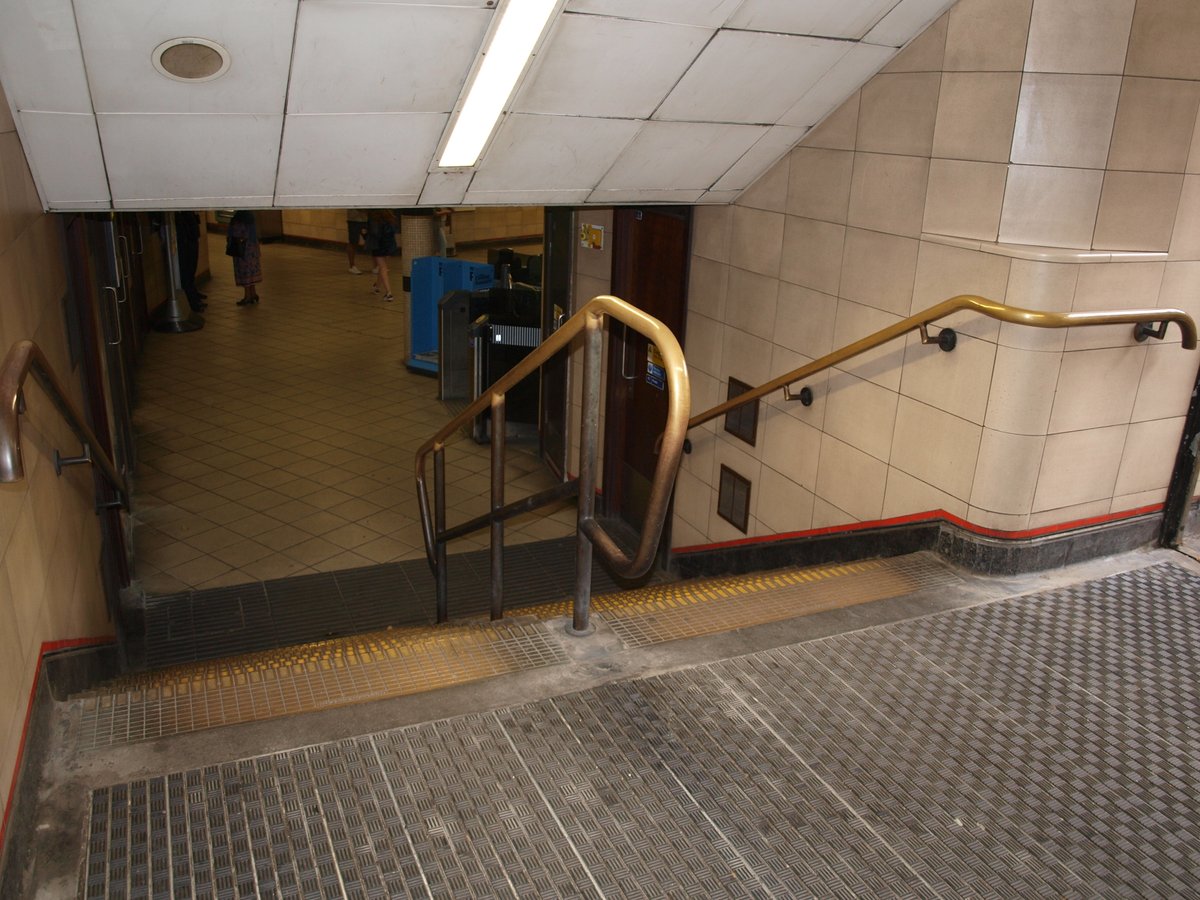
8 #NVHOW20 The only reference to 'panic' was afterwards when the crowd outside the shelter were ‘frantic with worry'. Reductions in police numbers since 1941 meant a permanent post at the entrance was no longer possible, & the constable assigned there during an alert arrived late 
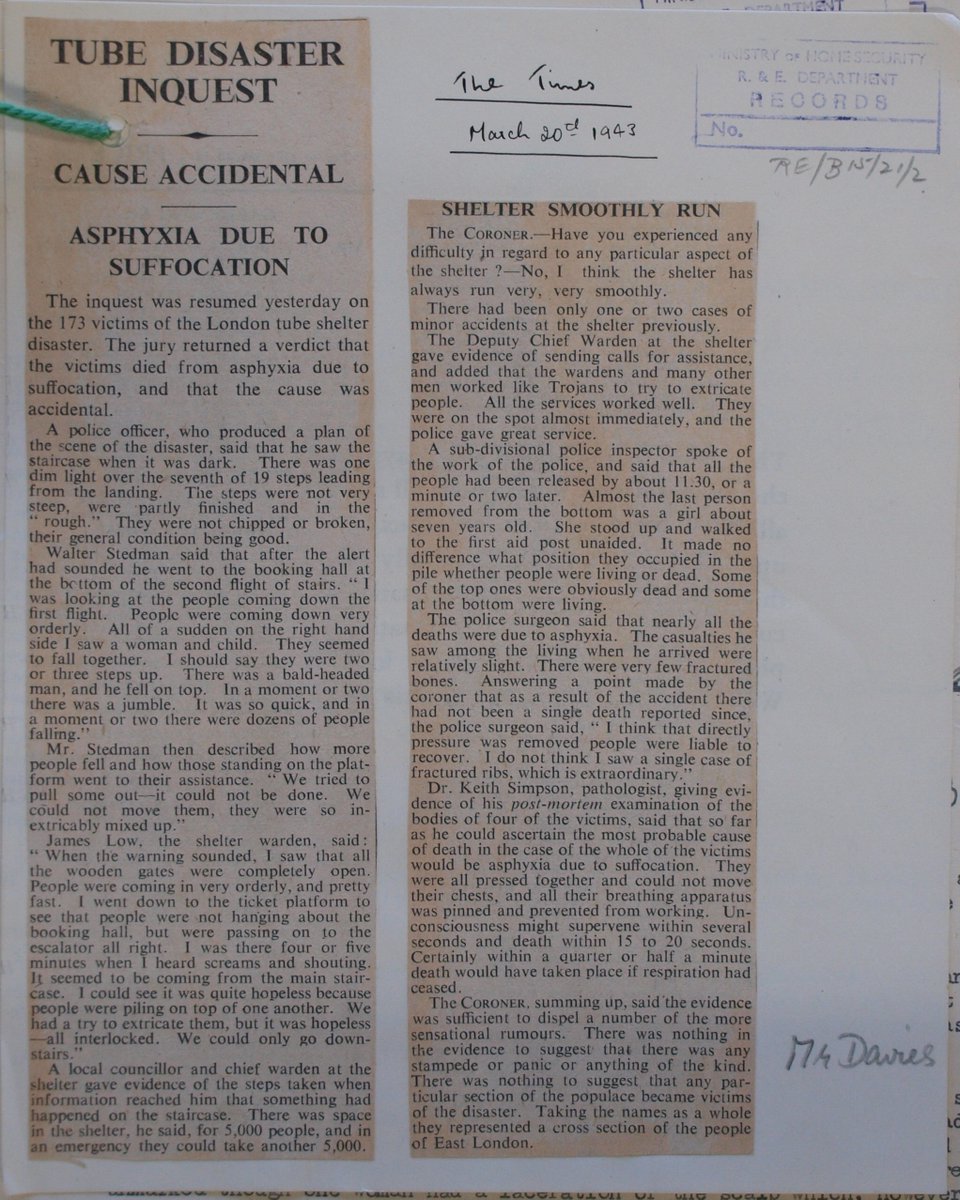
9 #NVHOW20. The Dunne report put the Government in a difficult position, as information that personnel shortages had 'very adversely affected' Civil Defence could have led to additional raids on London. The lack of police & wardens were also significant 'security considerations'. 

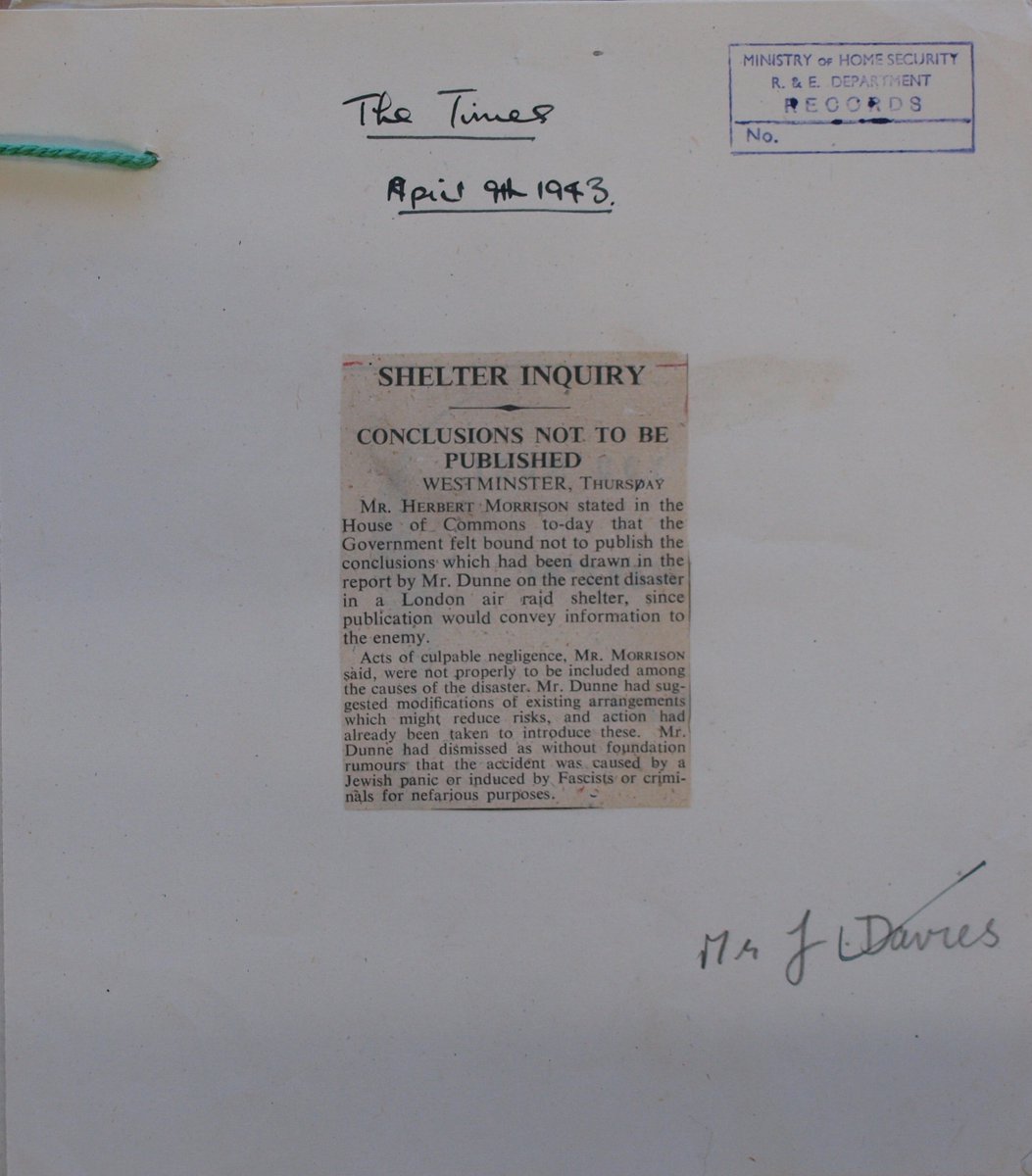
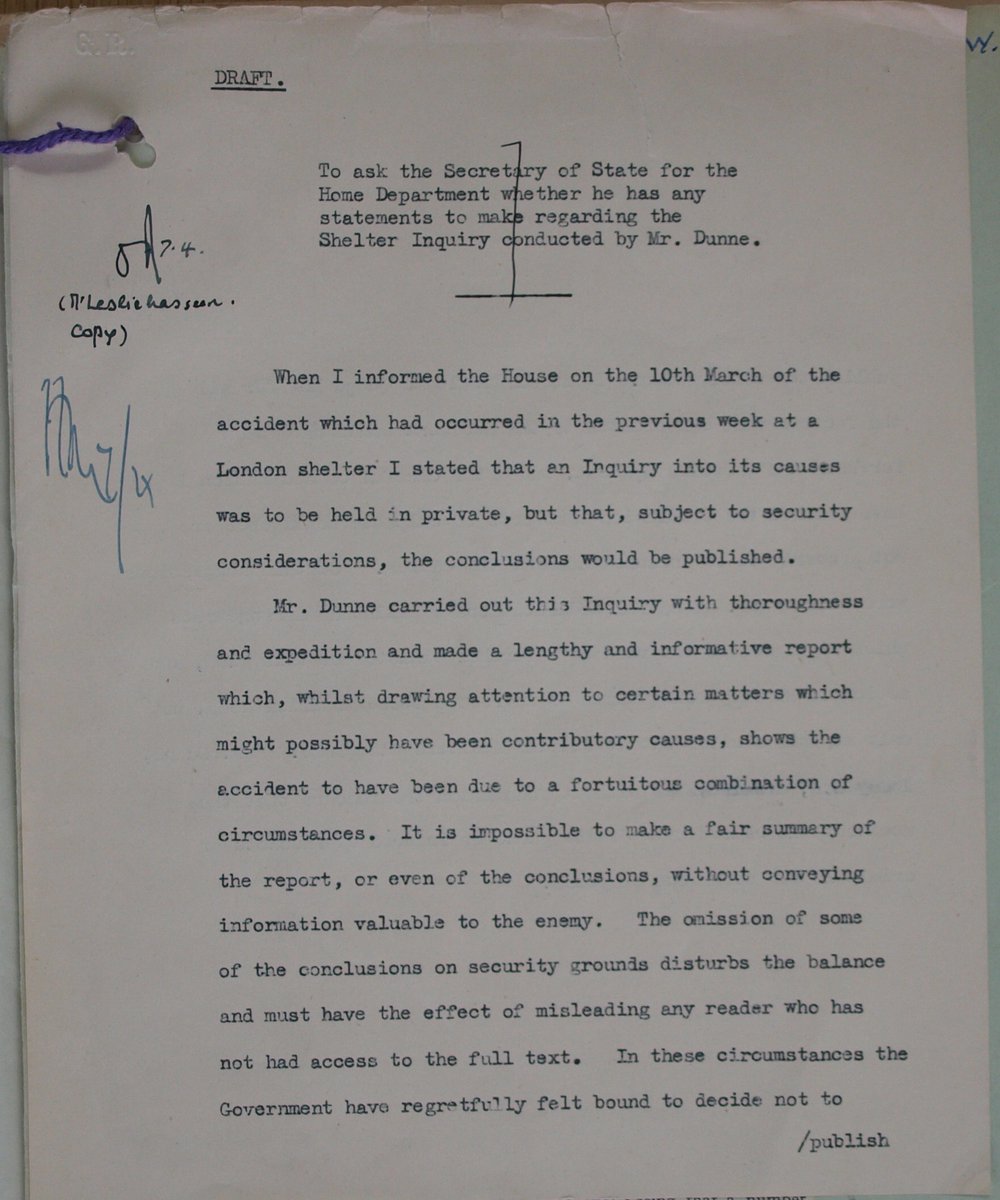
10 #NVHOW20 A roof had been added to the stairs & the entrance and gates were strengthened in 1941, but these 'improvements' were the wrong solution. The work proposed in 1941 & actually carried out in 1943 demonstrates how circumstances had changed since Winter 1940-41. 



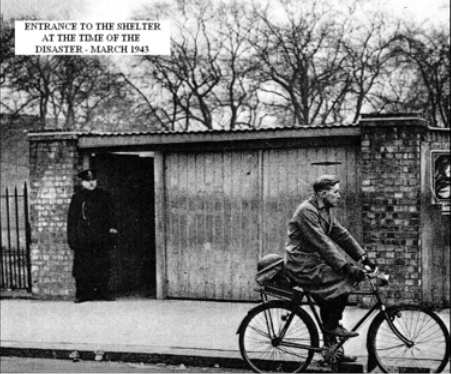
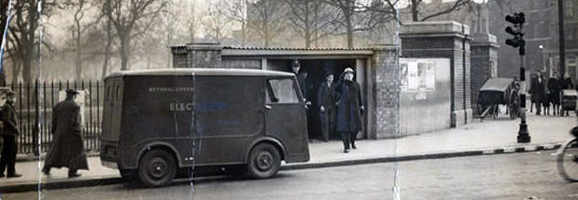
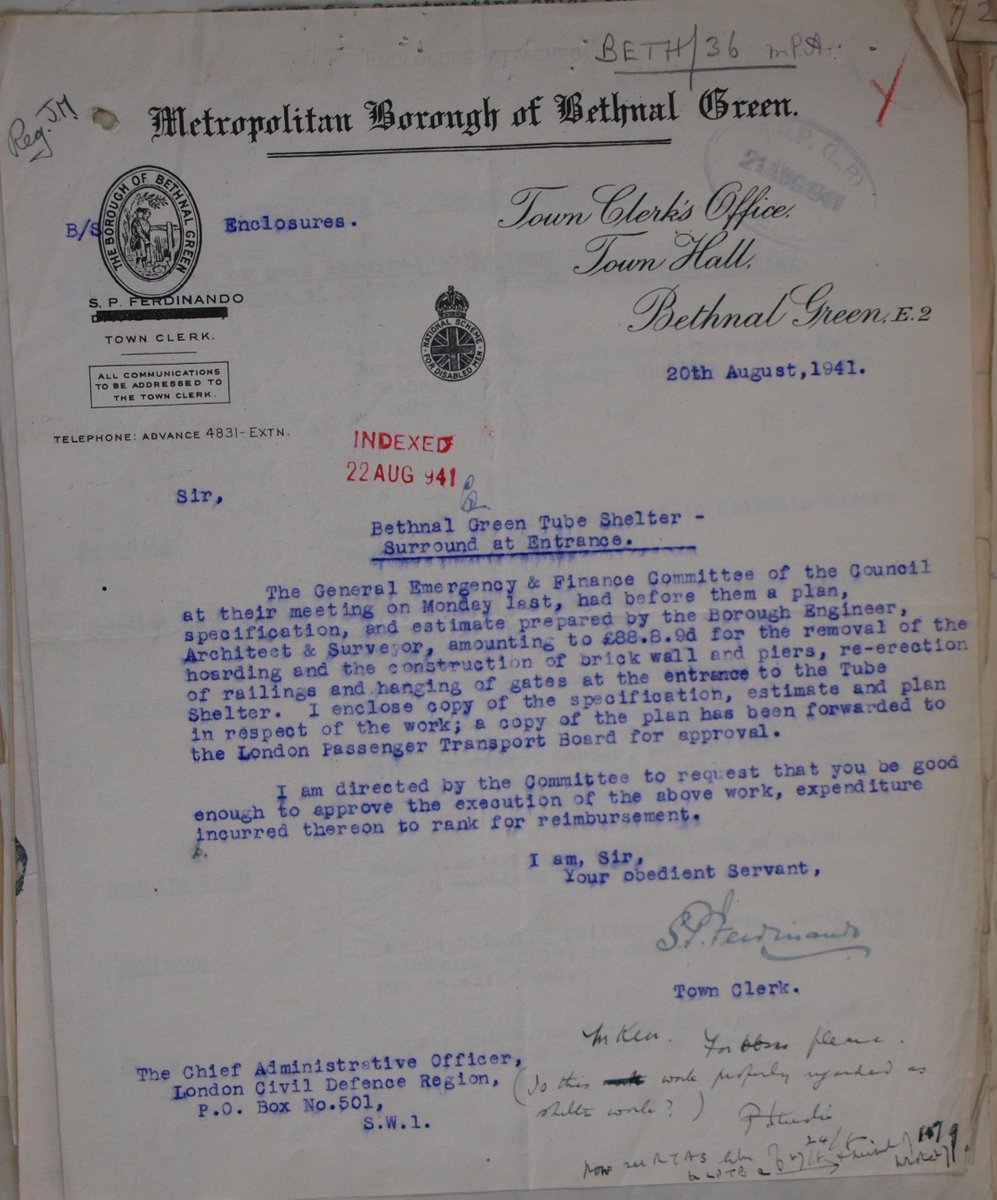
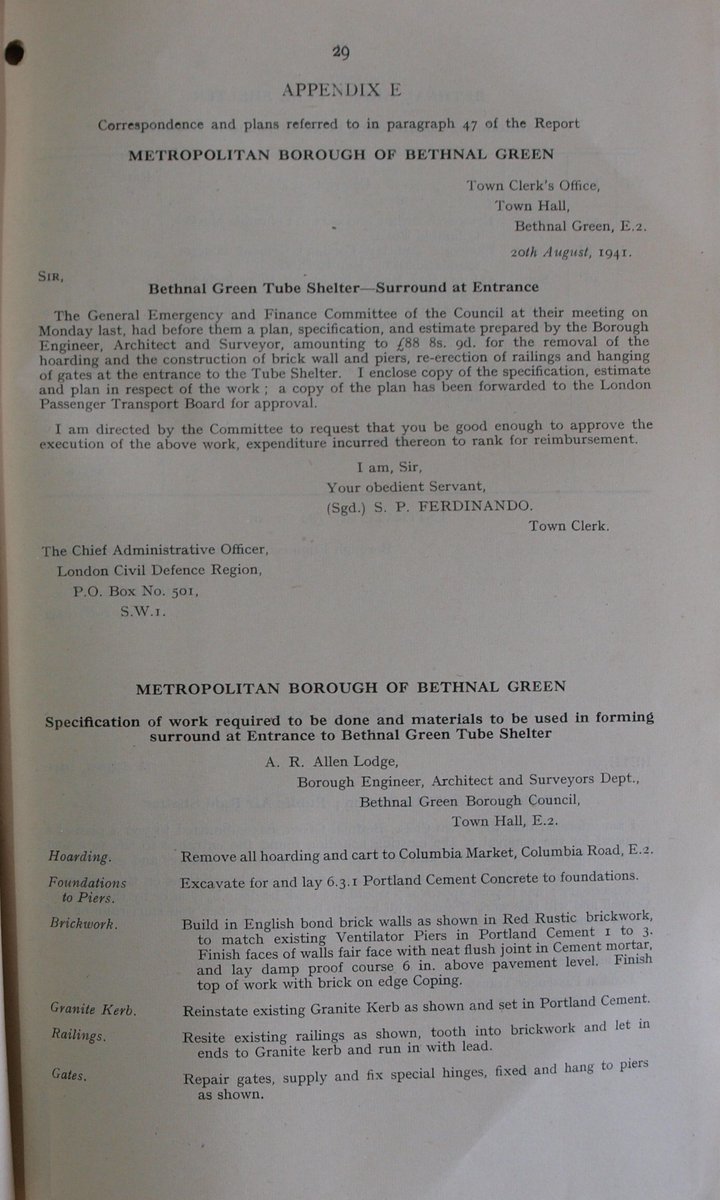
11 #NVHOW20 Reports of crowds being 'out of hand' were after the accident, & may have been people searching for relatives. Although a crush barrier would not have prevented the initial fall, it may have mitigated the casualty figures, but this had never been previously considered 


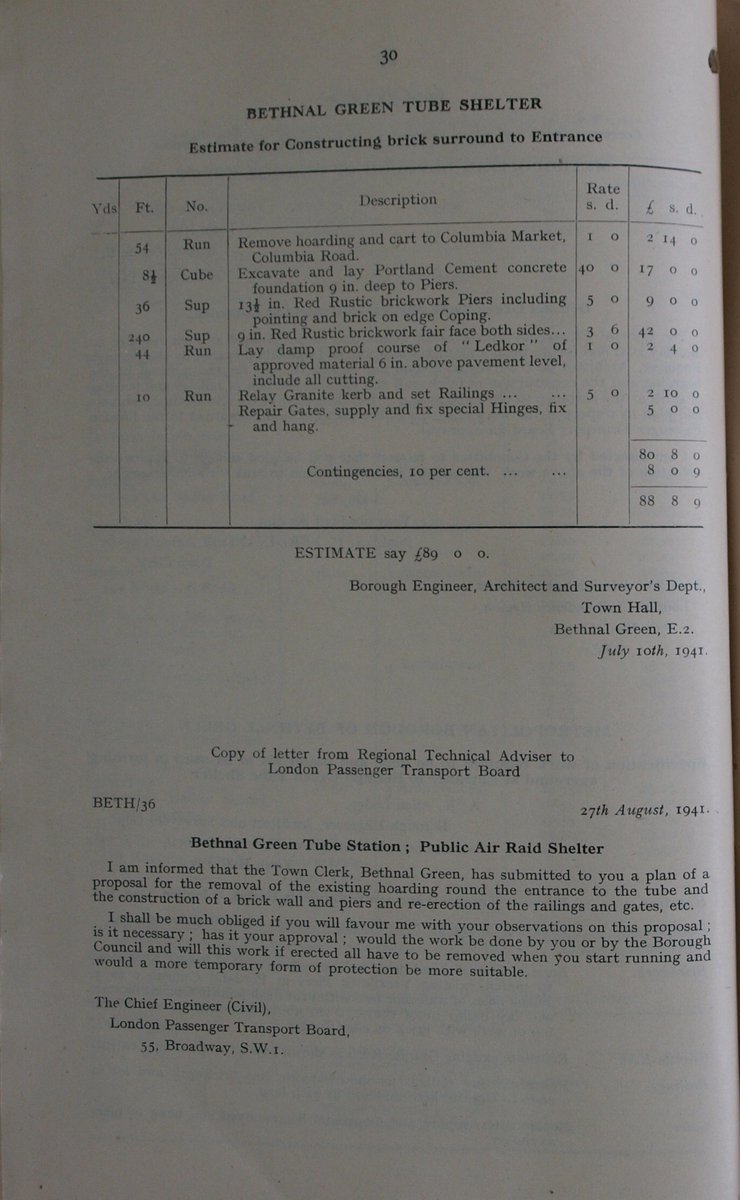
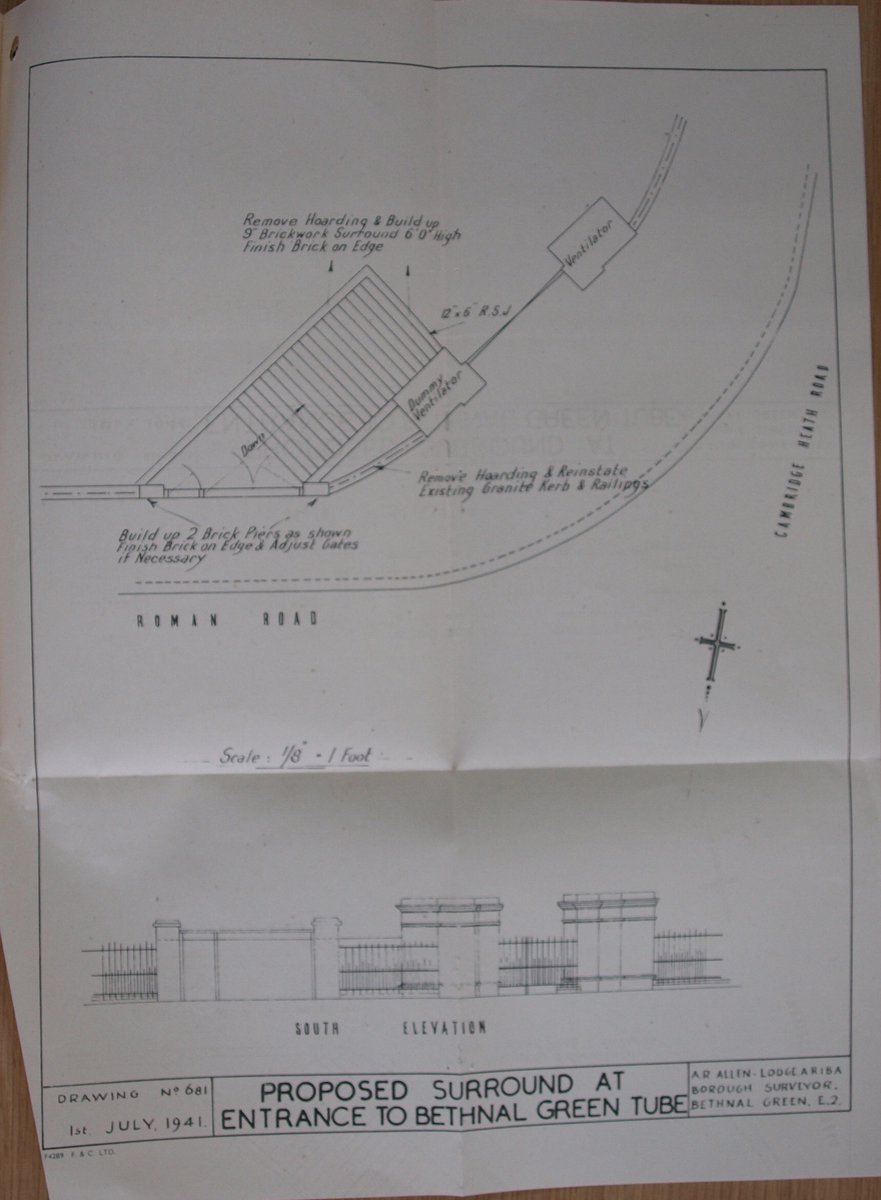
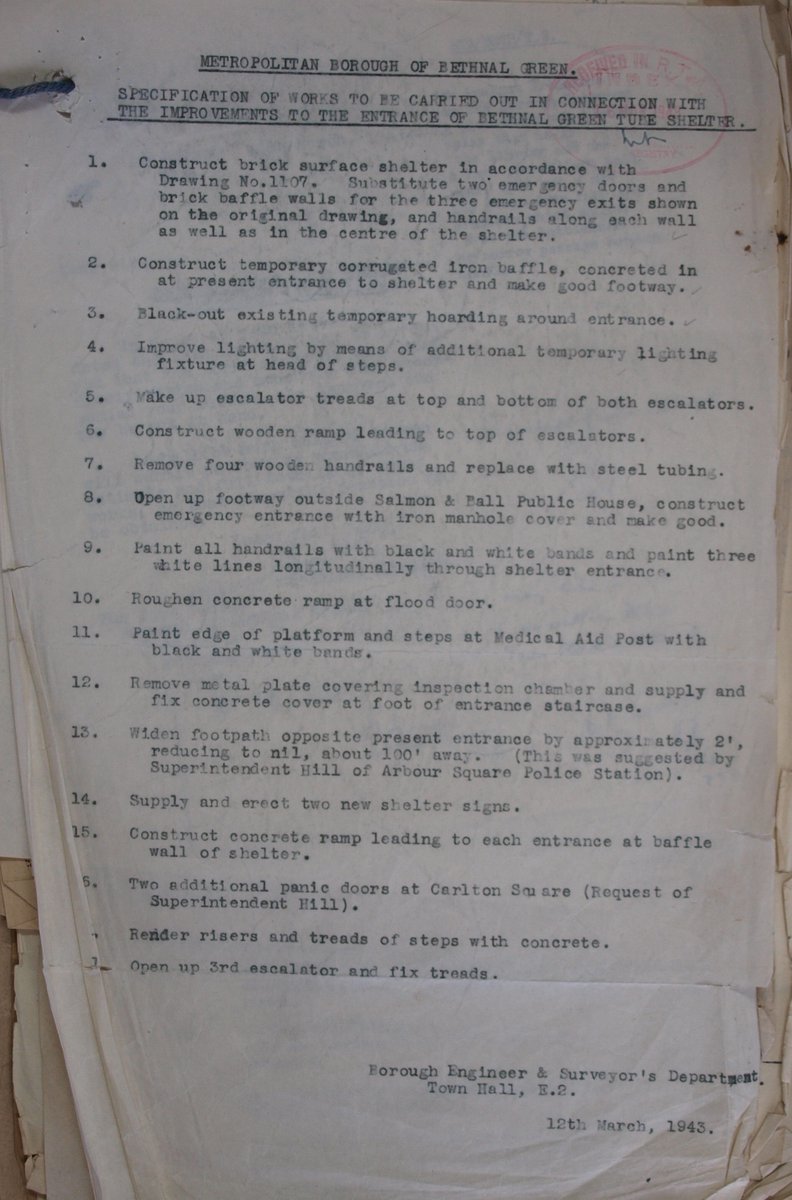
12 #NVHOW20 The 'rough condition' of the steps caused the fall, which then blocked the staircase. These victims should be remembered as unfortunate casualties of a country fighting a war running out of money & resources, rather than as being trampled to death by a terrified crowd 

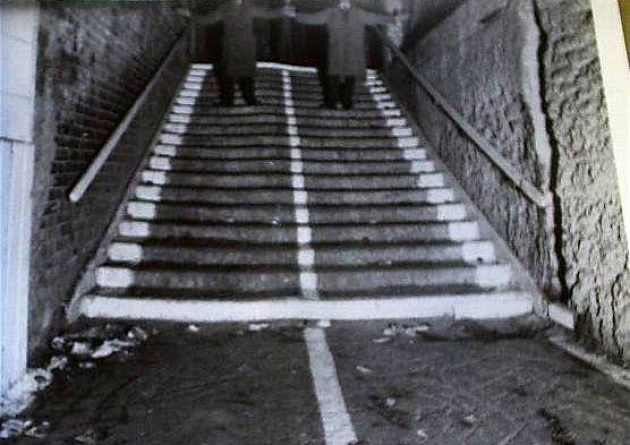
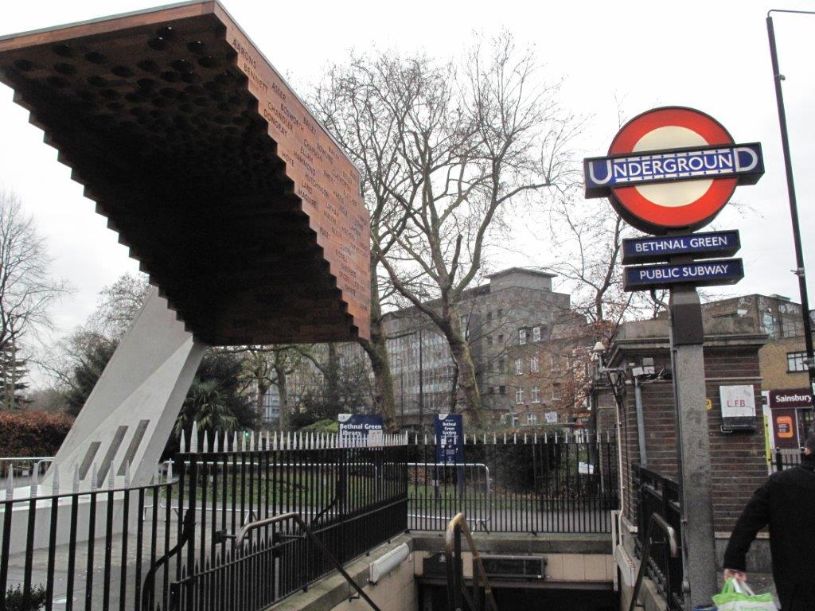
13 #NVHOW20 Ask me questions @smooreBofB1940
• • •
Missing some Tweet in this thread? You can try to
force a refresh












